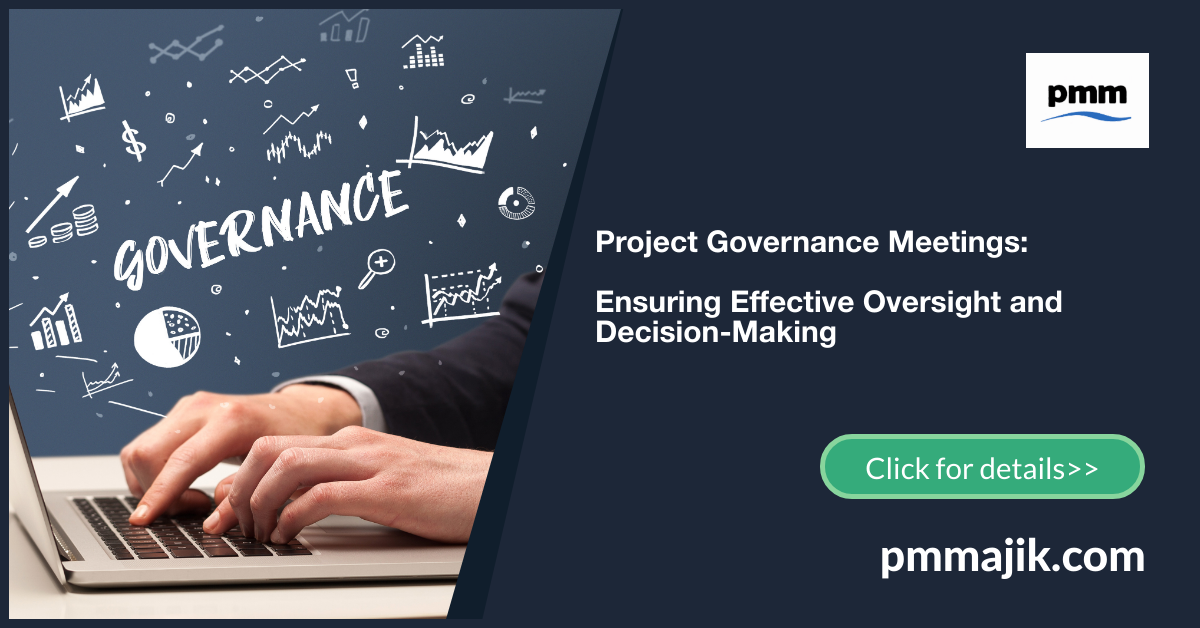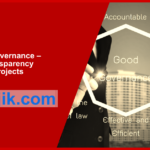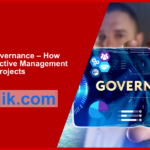For projects to be administered and completed effectively, project governance meetings are necessary. They ensure accountability, provide a structured framework for making decisions, and facilitate communication amongst interested parties. It has been shown that various forms of governance meetings serve different purposes throughout a project.
That being said, project governance meetings are relevant and compliant in both public and private domains. This article examines the many types of governance meetings, their preparation strategies, and effective governance session management techniques.
Types of Governance Meetings
1. Kick-off Meetings
Kick-off meetings usually include the project manager, sponsor, and team members. Aligning everyone with the project’s objectives, constraints, timeline, roles, and responsibilities is the major objective. As the name indicates, this meeting sets the tone for the project and guarantees that all participants understand its goals and expectations.
2. Steering Committee Meetings
Steering committee meetings are attended by senior stakeholders who oversee and give strategic direction. Regular scheduling of these meetings typically occurs on a monthly or quarterly basis, contingent upon the project’s complexity and duration. The steering committee assesses the project’s progress, resolves any high-level issues, and makes decisions on issues that may have an impact on the project’s resources or direction. They must ensure that the project adheres to the strategic objectives of the firm or organization.
3. Gate Reviews and Decision Points
Gate reviews, sometimes called decision points or phase gate reviews, take place at pivotal moments in the project lifecycle. These discussions evaluate the project’s development and decide whether to move it to the following stage. Gate assessments are crucial for controlling project risks and guaranteeing that every stage fulfils requirements before proceeding. During these assessments, decisions are made about whether to continue the project, make revisions, or even end it (depending on the current outcome).
Preparing for Governance Meetings
Adequate preparation is critical to successful governance meetings. Here are some essential steps for pulling off proper governance meetings:
• Agenda-setting and Time Management
A well-structured agenda is necessary to keep the meeting on track and productive. It is advisable to send the agenda in advance so everyone can prepare and contribute meaningfully. To ensure that all topics are covered in the meeting’s allocated time, it is recommended that the organizer assign specific timeslots to each item on the agenda. Prioritize crucial choices and subjects to improve the efficacy of the conference.
• Documenting Decisions and Action Items
Accountability and monitoring advancement depend on accurate record-keeping of decisions and action items. Assign a specific person to take notes on important conversations, choices made, and action items with deadlines and allocated roles. Meeting organizers must endeavour to distribute the meeting minutes as early as possible so that everyone is aware of them and can follow up on their assignments.
Steps to Conducting Effective Governance Meetings
Conducting effective governance meetings involves several best practices to ensure they achieve their intended outcomes:
1. Clear Objectives: Establish the purpose of the meeting and make sure it is in line with the project’s objectives. At the start of the meeting, let each attendee know what these goals are.
2. Engage Participants: Encourage everyone in attendance to participate fully. Establish a welcoming atmosphere where interested parties can voice their opinions and concerns.
3. Focus on Key Issues: Stay concentrated on the essential matters that require consideration and judgment. Avoid getting distracted by unimportant matters that can wait until after the meeting.
4. Decision-making: Make sure that the meeting facilitates prompt and well-informed development or decisions from the meeting. Write a summary of the decisions taken and ensure they are appropriately recorded.
5. Follow-up: Make sure decisions and action items are carried out by following up on them. Review the status of action items and resolve any unresolved issues at the next meetings.
Conclusion
Whether it is a steering committee, gate review, or kick-off meetings, each has specific purposes throughout the project lifecycle and must be used appropriately for best results. A good meeting requires having a well-defined agenda, effective time management, and meticulous record-keeping.
Project teams may ensure clear communication, quick decision-making, and sound project outcomes by adhering to best practices for conducting governance meetings. Ultimately, productive governance meetings contribute to the overall success of initiatives and their alignment with the goals of the firm or organization.






